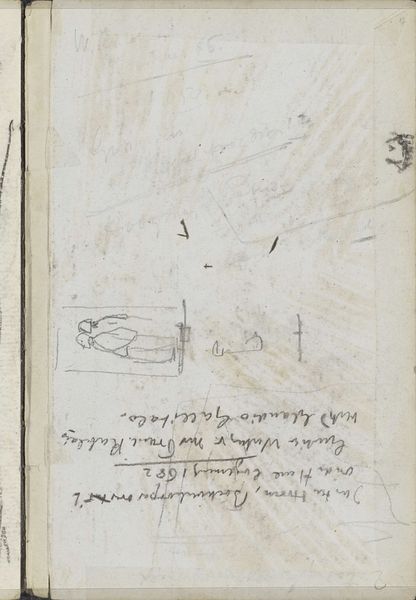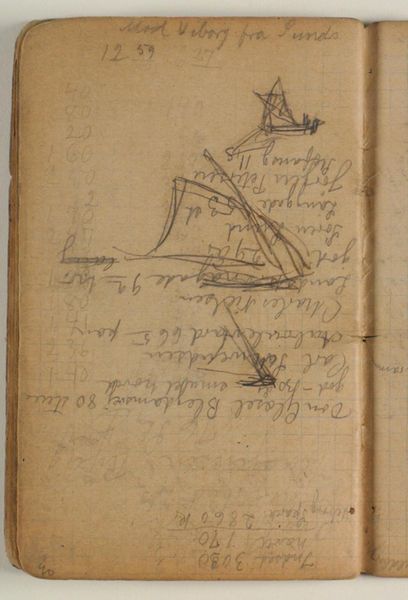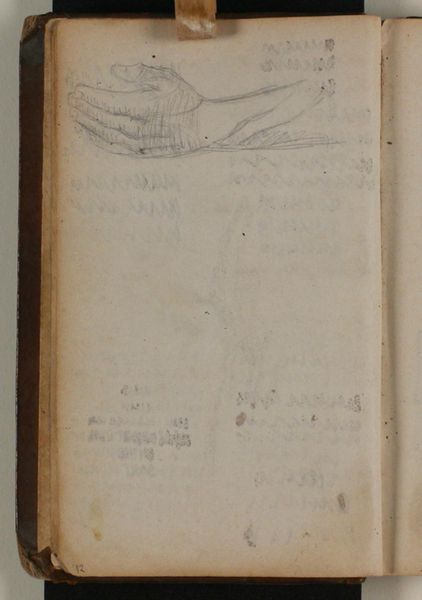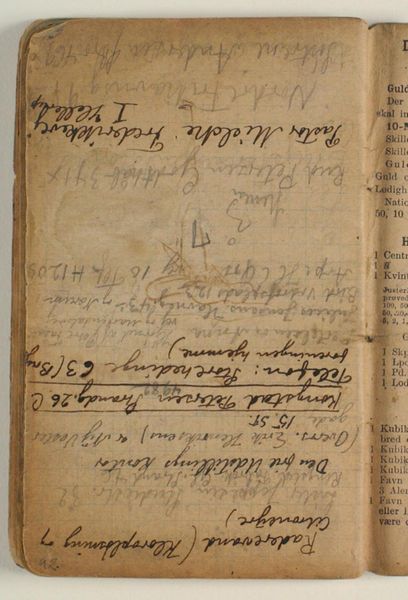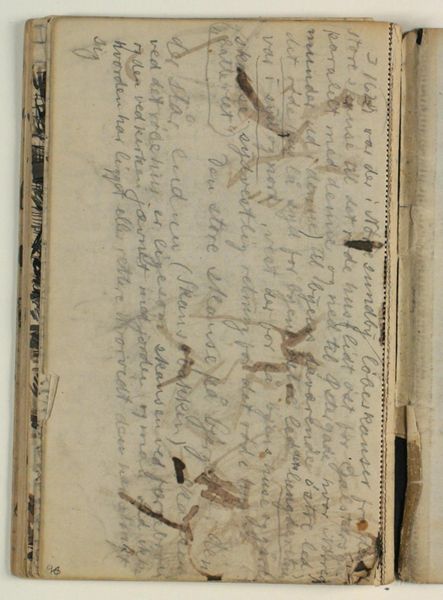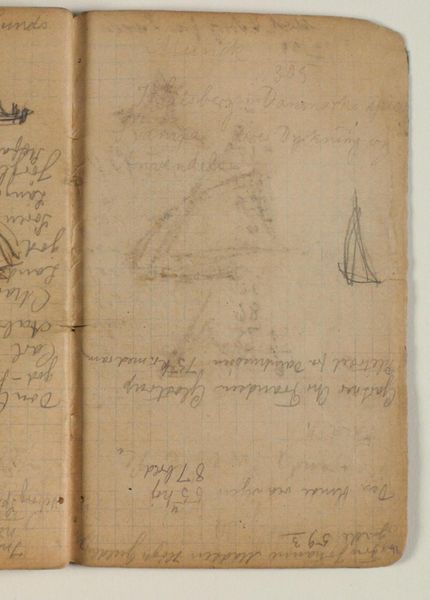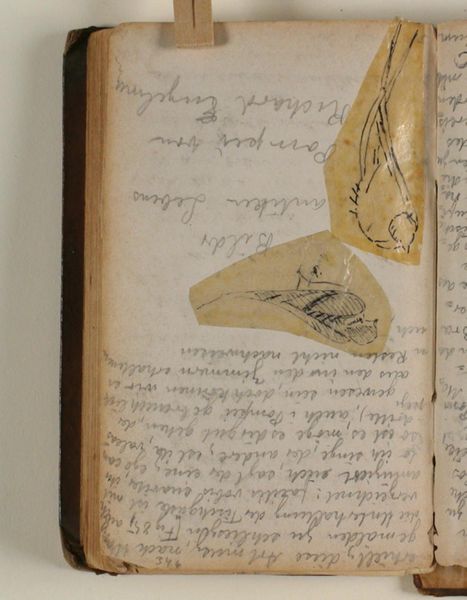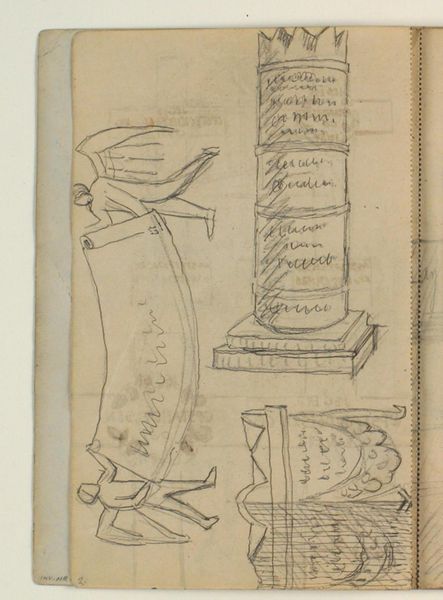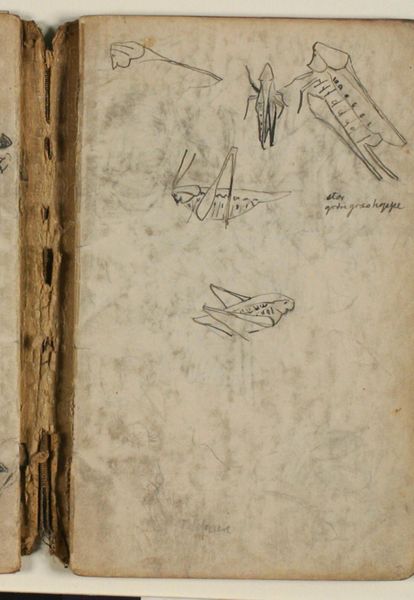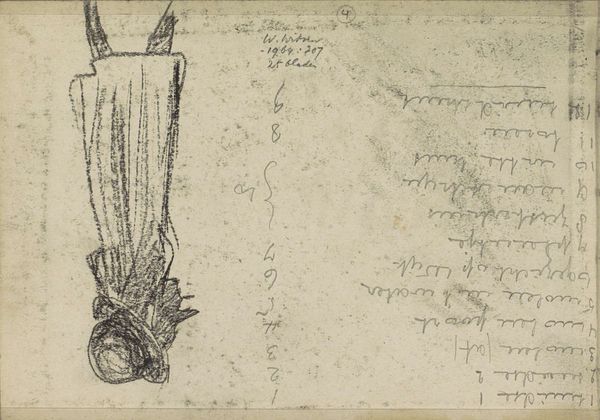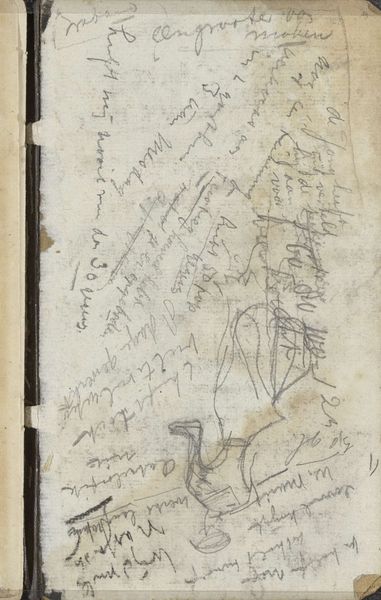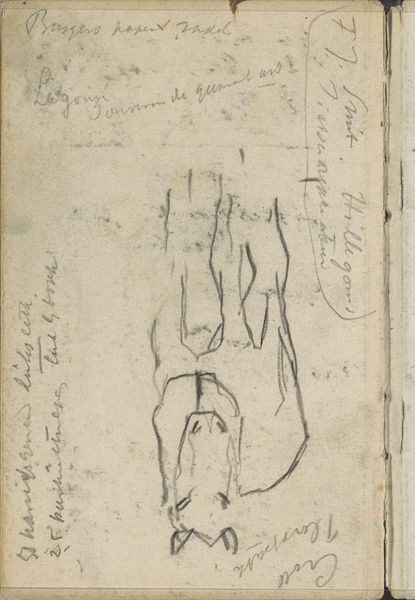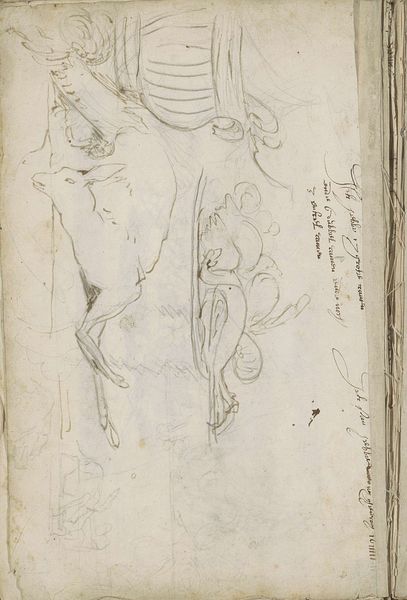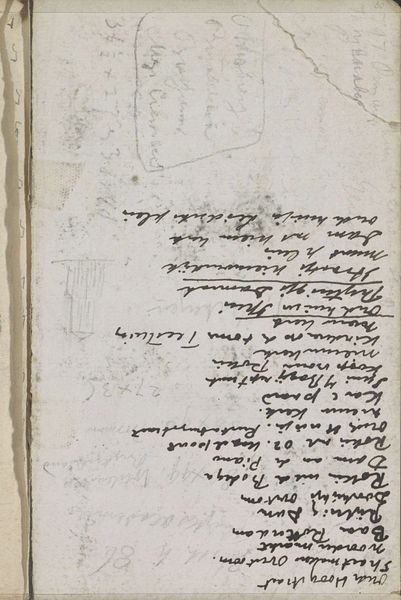
drawing, paper, pencil
#
drawing
#
figuration
#
paper
#
coloured pencil
#
pencil
#
line
Dimensions: 162 mm (height) x 98 mm (width) x 23 mm (depth) (monteringsmaal)
Editor: So, here we have a page from Niels Larsen Stevns' sketchbook, simply titled "Skitsebog", dating from 1864 to 1941. It's primarily pencil and colored pencil on paper. Looking at these sketches, they seem so ephemeral, fleeting captures of figures… What do you see in this piece, beyond just the simple drawings? Curator: I see a record, a document of artistic process deeply intertwined with the socio-cultural context of artistic training. Sketchbooks are intensely personal spaces, but they also become public records once they enter museum collections. How does the presence of this sketchbook within a major art institution impact your understanding of its "authenticity," or the artist's intentions? Editor: That’s a great point. It’s initially private, now very public! It’s interesting to think about that tension. Do you think the institution frames how we value seemingly mundane drawings, like figure studies, maybe elevating them to something more significant? Curator: Absolutely. Museums inevitably elevate the status of objects by placing them within narratives of art history and cultural significance. We frame these sketches as important steps in Stevns' artistic journey, informing his larger, more publicly displayed works. The "Skitsebog" embodies the complex politics of visibility. It asks us to consider who decides what art is, whose stories are told, and what it means for something as intimate as a sketchbook page to become a public artifact. Editor: That makes me think about who these figures *were*, everyday people just captured for a moment and how their image is now permanently part of an artwork. I see how much is packed into this seemingly simple drawing now. Curator: Exactly! These sketchbooks are social documents as well as aesthetic objects. It highlights the museum’s role, our role really, in preserving not just art but also slices of history. Editor: That's been such an insightful way to think about it. Thanks for shifting my perspective. Curator: My pleasure. Seeing art through different lenses allows us to appreciate the full complexity of even the simplest of drawings.
Comments
No comments
Be the first to comment and join the conversation on the ultimate creative platform.
